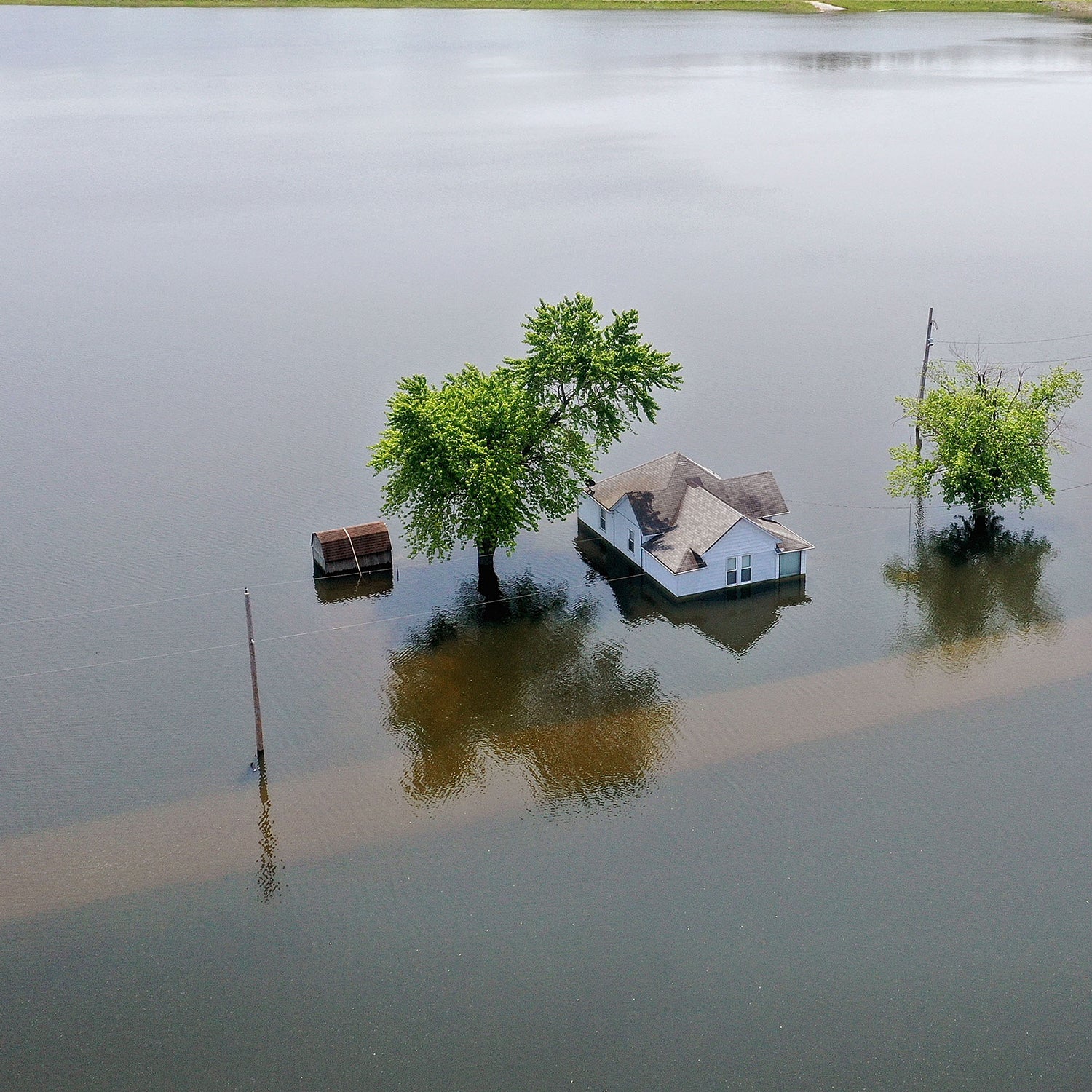If you are drinking water, taking showers, and washing your hands with any kind of frequency right now, you’re probably relying on the health and proper management of rivers. As many of us focus on staying healthy, solvent, and sane in these times, it can be easy to forget how much we depend on river management.��
Every year since 1984, the nonprofit American Rivers has released a list of the country’s most endangered rivers: waterways that are under threat from human and natural causes. The list helps identify which areas are most at risk��and informs advocates and policymakers as they shape their agendas. As the result of devastating floods in 2019, which submerged homes, farms, and roads for more than 100 days in some areas,��this year’s ��are the Upper Mississippi and Lower Missouri, whose combined basins span nine states across the Midwest.
Nearly 15 million people for drinking water. Its basin produces 92 percent of the nation’s agricultural exports, and the river is home to 25 percent of American fish species. Last year water overtopped levees , and Missouri, rushing into floodplains that had been converted to neighborhoods and farms built into designated floodplains. Similar devastation basin, which encompasses a quarter of the country’s agricultural land. An astonishing 850 miles of levees were damaged. According to NOAA, repair costs in the Midwest .��
These massive management systems, built early in the 20th century, were designed to shape waterways to benefit human beings in the short term. From diversion to dams, nearly every river in the U.S. is under some kind of human control, and most of that infrastructure is aging, even as it comes under increased pressure from climate change.��
The bones of the two rivers’ aging management systems, especially levees, are poking out in a way that clearly threatens homes, agriculture, and water access across the region. There are 29 locks and dams on the Upper Mississippi alone, and many of them were built in the 1930s, with an estimated . The Lower Missouri is fed by massive dams upstream that continually release water in order not to blow; meanwhile, its downstream levees are and built to differing standards, leaving towns and farms routinely at risk of flooding out.��
It’s time to give them a reboot—because healthy rivers are also one of the few ways we might, in an ideal world, recover from the current crises in the long term.��
The endangered-rivers list was released��on April 14, as the United States continues to battle both a raging pandemic and an economic meltdown. Along the Lower Missouri and Upper Mississippi, residents face�� and a potentially unproductive, economically devastating farming season due to stay-at-home orders, lost income, and inability to work—problems that any severe flooding this year would only exacerbate. “Coronavirus exposes so many of our vulnerabilities and shows how outdated infrastructure is a recipe for disaster for communities,” says Amy Kober, American Rivers’ vice president for communication.
“We need to step back and take a more watershed approach to manage flooding,��reconnecting rivers with floodplains��and setting levees back to give rivers room to spread out,” Kober says. “It’s good for health and habitat��and good for communities if we do it in a strategic, managed way��and use climate-change projections as part of our planning.”
Concerted government action is necessary, both to ease the burden of immediate concerns and to plan for a more sustainable future in the Lower Missouri and Upper Mississippi basins��and across the U.S.��American Rivers is currently calling on Congress to end water shutoffs for people who can’t pay their bills for the duration of the coronavirus crisis (as 90 cities ). Advocates are also eyeing the next round of��, which is shaping up to be a New Deal–style investment in jobs and infrastructure. “There are huge opportunities for some smart investment [in rivers],” Kober says.
As for mitigating the long-term risk to the Upper Mississippi, Kober points toward an , which her advocacy group considers��an example for other river projects. It aims to build natural barriers to better absorb floodwater��and develop new scientific tools to better manage the river and its tributaries and floodplains. A philosophical shift, it would also redefine how a river is perceived—as a living variable entity instead of a water pipeline. “Adequately funded and supported by the public and Congress, the study would transform how the United States manages its rivers and floodplains,” the American Rivers report reads.��
Rethinking river management could be especially transformative right now. In the face of record-high joblessness, we could use river projects to help pull us back from the brink of an economic recession. That’s happened before: much of the country’s existing water infrastructure was constructed in the wake of the Great Depression. Rivers helped steer the country out of the economic crisis by creating massive public-works projects—the Tennessee Valley Authority and the Grand Coulee Dam, for example, were major parts of the New Deal.
These days��we know more about how to sustainably manage rivers and our public infrastructure, from wastewater systems to those big river levees. “The way they thought about it during the New Deal was, We need to harm and harness our rivers for economic gain,” Kober says. “Now we can protect our rivers for economic gain with the same can-do spirit.”��
Long-term climate threats to rivers like the Upper Mississippi and Lower Missouri aren’t going away, but we can mitigate the immediate human ones. Policy changes like the Army Corps’ Upper Mississippi study would create jobs, shore up our food system, hold on to habitat, and make sure everyone has access to clean water. Rivers, managed right, can do all of that. If we’re going to be throwing a ton of taxpayer money around, how can we stretch it farthest and��to the benefit of the most people?��
Taking the long view would require that policymakers step back and try to see the big picture, even while managing a crisis. That’s difficult to accomplish with a gridlocked Congress, an ineffective White House, and the immediate, short-term crises at hand. But that’s where the American Rivers list comes in: it’s an outline for where to focus, showing us the places exhibiting the most need and that have the most to gain. Ideally—and maybe unrealistically, but hey, I’m trying to manifest positivity here—we would adopt policies that do the most long-term good in response to so many pressing challenges.


